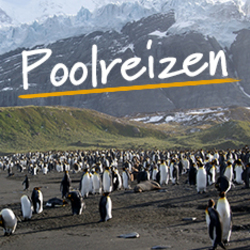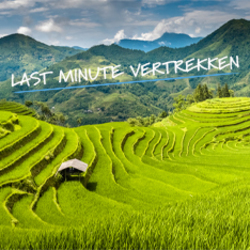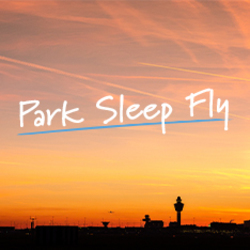Maak kans t/m 5 januari
BekijkActivities
- Culture
- Cultural Wonders
- — Experience Turkey’s best bits: ancient ruins, otherworldly landscapes and coastal bliss — Discover the history and ruins of the ancient Ottomans, Romans and Trojans — Take a dip in the hot spring cascades at Pamukkale – known as the cotton castle — Unwind on the beautiful Turquoise Coast while staying in Kaş — Enjoy an optional hot-air balloon ride over the fairy chimneys of Cappadocia
Food
-
1
Start Istanbul
Make your own way to the start hotel and check in. There is no sightseeing planned today (an orientation walk is included on your return to Istanbul on Day 14). Istanbul is one of the great cities with a history spanning thousands of years. It has been through several incarnations, firstly as Byzantium, then Constantinople and finally Istanbul. If there is time, you can wander through the busy streets and absorb the vibrancy of this exciting city linking Europe and Asia. Accommodation: Beethoven Premium Hotel (or similar)
-
2
Transfer to Çanakkale via Gallipoli peninsula
There’s a welcome meeting at 9am. Then we depart for the Gallipoli peninsula, the site of many significant battles during the First World War. We visit the battlefields, learn about the events that took place here, and their particular importance to the ANZAC (Australia and New Zealand Army Corps). We then cross the Dardanelles Strait, arriving in the city of Çanakkale in the late afternoon. Approximate driving time from Istanbul to Çanakkale is 5hr 30min (not including stop in Gallipoli). Accommodation: Cura Hotel (or similar)
-
3
Visit the ancient city of Troy; head to the Aegean coastal town of Ayvalik
This morning after breakfast we visit the city of Troy, immortalised in Homer’s Iliad and once thought to be a place of legend. We see the remnants of the ancient city walls and a reconstruction of the famed wooden horse, while learning more about the ground-breaking archaeological digs that took place here. We continue this afternoon to the seaside town of Ayvalik on the Aegean coast in the northwest. Surrounded by an archipelago of picturesque islands, the town is full of historic stone houses, narrow cobblestoned streets and small shops/cafes selling local produce. We have free time to explore the town, perhaps sampling some of the renowned local olive oil or Ayvalik tost (similar to a club sandwich). Approximate driving time from Çanakkale to Ayvalik is 3hr 30min. Accommodation: Bacacan Hotel (or similar)
-
4
Visit the ancient city of Pergamon; afternoon transfer to Selcuk
After breakfast, we depart for the ancient Greek city and Unesco World Heritage site of Pergamon, the capital of the Attalid dynasty during the Hellenistic period (approximately 323 BCE to 31 BCE). We take a scenic cable car ride up to the Acropolis, which contains the most important remains of Pergamon. See the temples, palaces, library and theatre and learn about the significance of this special archaeological site. We continue to the charming town of Selcuk, where the evening will be free for you to rest or explore at leisure. Approximate driving time from Ayvalik to Selcuk is 2hr 30min. Accommodation: Hitit Hotel (or similar)
-
5
Visit the historic site of Ephesus and the town of Selçuk
This morning, we visit the ancient site of Ephesus, one of the best-preserved classical cities in the eastern Mediterranean and a great example of Greco-Roman architecture. Always an important religious centre, Ephesus was founded by Ionian Greeks in the 11th century BCE and flourished under Roman rule. The Greeks replaced the cult of the Anatolian fertility goddess Cybele with Artemis and built a fabulous temple in her honour. With the arrival of the Romans, it became the Temple of Diana and was one of the Seven Wonders of the Ancient World. We visit the vast amphitheatre, stroll the marble streets once graced by Cleopatra and Mark Antony, and marvel at the gymnasium, baths and wonderfully restored Library of Celsus. After the Ephesus visit, we head to Selçuk and visit Isa Bey Mosque (a fine example of early Seljukian architecture) and St John's Basilica. There will also be free time, during which we recommend a visit to the fascinating Ephesus Archaeological Museum. We return to Selçuk for the evening. Accommodation: Hitit Hotel (or similar)
-
6
Explore the limestone cascades of Pamukkale and the Roman ruins of Hierapolis
We drive to Pamukkale today, also known as Cotton Castle. This spectacular natural phenomenon was created by deposits from thermal waters that cascaded down the mountainside over hundreds of years, forming myriad pools and terraces. As the water overflows from the pools, dazzling cream-coloured stalactites are formed that, from afar, resemble cotton or snow. The pools are filled with hot spring waters that supposedly have healing properties and are great place for a relaxing dip. Close to Pamukkale are the ruins of Hierapolis, which was founded by the King of Pergamon in 190 BCE and by the second century CE had become an important Roman bath centre. The extensive ruins of Hierapolis are well worth exploring and include a theatre, temple, holy area, monumental fountain, bath, basilica and necropolis. We spend the afternoon discovering the travertines and ancient city. Approximate driving time from Selcuk to Pamukkale is 3hr-3hr 30min. Accommodation: Melrose Viewpoint Hotel (or similar)
-
7
Visit Xanthos; transfer to coastal town of Kaş
We depart Pamukkale this morning and travel to the seaside town of Kaş. On the way, we stop at Xanthos, the capital city of the Lycian Federation and arguably the most important city throughout Lycian history. After a guided visit, we continue on the road to Kaş. Situated on the Teke Peninsula, the small port town of Kaş was known as Habesos or Habesa in ancient Lycia, and as Antiphellos to the ancient Greeks. Today, there are several Lycian rock-cut sarcophagi in the town, plus a well-preserved Hellenistic theatre on the outskirts of town. The afternoon is free to explore the cobbled streets, handicraft shops and lively cafes. Approximate driving time from Pamukkale to Kaş is four hours. Accommodation: Kayahan Hotel (or similar)
-
8
Free day to rest or choose from the many activities available
Today is a free day to relax or take advantage of the many activities available on the Turquoise Coast in and around Kaş. Options include a boat trip to the sunken city of Kekova (minimum of eight passengers required), relaxing at Kaputas Beach or a visit to the ancient theatre in Kaş. Accommodation: Kayahan Hotel (or similar)
-
9
Transfer to the lively city of Antalya; afternoon sightseeing
This morning, we depart for Antalya, one of the most popular beach resorts in Turkey. Arriving in the early afternoon, we visit the Kaleiçi (the historic city centre). With narrow, cobbled streets and Ottoman-era houses, the Kaleiçi has retained much historical character while hosting a plethora of bars, restaurants and shops. During our walk, we see Hadrian's Gate (also known as the Triple Gate due to its three archways), the old Roman harbour and the turquoise waters of the Mediterranean. You may also want to visit the Antalya Museum this afternoon, which as a wonderful collection of sculptures from the Roman period or the ancient city ruins of Phaselis. Approximate driving time from Kaş to Antalya is 3hr 30min. Accommodation: Afflon Hotel (or similar)
-
10
Visit the ancient city of Perge & theatre of Aspendos; afternoon transfer to Konya
This morning, we visit the ancient city of Perge, birthplace of the Greek mathematician Appollonius of Perga. Then we travel to Aspendos, home to the best-preserved theatre of the ancient world. Once named Belkis, the city was founded by the Hittites, but it was Roman emperor Marcus Aurelius (161CE-180CE) who ordered the 15,000-seater theatre to be built. After exploring the ancient site, which is still used for performances today, we continue to Konya, known as Iconium in Roman times. Konya was an important city of the Seljuk empire and is the birthplace of the mystic Sufi order popularly known as the Whirling Dervishes. Approximate driving time from Antalya to Konya is 4hr 30min. Accommodation: Bera Hotel (or similar)
-
11
Visit the Mevlana Museum then to the Cappadocia region
This morning we visit the Mevlana Museum, the former home of the Whirling Dervishes and the location of Mevlana Celaleddin-i Rumi's tomb. Mevlana, also known simply as Rumi, was a 13th-century Anatolian mystic and Muslim saint whose poetry is known across the world. The museum is now a pilgrimage site and the building's fluted dome of turquoise tiles is one of the most recognisable sights in Turkey. We continue to the fascinating Cappadocia region. Shaped by wind and water, the rock formations, rock-hewn churches, cave dwellings and underground cities are a true marvel. This afternoon, we visit the 13th-century Sultanhani Caravanserai, one of the largest in the world and once used by Silk Road travellers. Our last stop of the day is the breath-taking Ihlara Valley on the slopes of Mount Hasan (one of the volcanoes responsible for the formation of Cappadocia). We embark on a walk beside the Melendiz River, seeing beautiful natural scenery and dozens of rock-hewn churches and monasteries, many of which are decorated with exquisite biblical frescoes. We end the day at our accommodation in Göreme. Approximate driving time from Konya to Cappadocia is four hours. Accommodation: Flavia Hotel (or similar)
-
12
Discover Göreme Open-Air Museum and one of the fascinating underground cities in Cappadocia
Early in the morning, you have the option to experience a memorable hot-air balloon ride over the otherworldly fairy chimneys of Cappadocia. After breakfast, we visit the Unesco World Heritage-listed Göreme Open-Air Museum, a vast monastic complex comprising churches, monasteries and dwellings, plus an underground city. Thought to have started life as a Byzantine monastic settlement, Göreme Open-Air Museum became a pilgrimage site during the 17th century and is a must-see location for all visitors to Cappadocia. The rock-hewn churches contain wonderful frescoes, whose colours are still vivid after hundreds of years. We also visit one of the fascinating underground cities in Cappadocia (Derinkuyu or Kaymakli, depending on availability and other local considerations). It is believed these cities were formed as early as the eighth century BCE by the Phrygians to protect their inhabitants from wars and conflicts. The dwellings continued to be used until the early 20th century when they were abandoned. Accommodation: Flavia Hotel (or similar)
-
13
Flight to Istanbul. Afternoon optional city tour
This morning, we say goodbye to Cappadocia and take a flight to where it all began: Istanbul. On arrival, you may wish to join your leader for a trip across the Bosphorus to the Asian side of the city. Here you’ll find lively, close-knit communities and jumbles of cute cafes, markets and restaurants. The rest of the afternoon is yours to explore more of this enthralling city. Or you may opt for a Turkish bath treatment. Accommodation: Beethoven Premium Hotel (or similar)
-
14
Free time; afternoon sightseeing including the Blue Mosque and Grand Bazaar
The morning is free. In the afternoon, you may have free time or you can take an orientation walk around this culture- and history-rich city. We head to Sultanahmet (the Old City, formerly Constantinople), where ancient empires were found and historical sites intertwine with the living, breathing Istanbul of today. We visit sites including the Blue Mosque and the Hippodrome, where Byzantine emperors observed chariot races along with thousands of baying fans. We also meander through the Grand Bazaar, packed with more than 3,000 stalls of handcrafted jewellery, textiles and books, along with the renowned Spice Market. Accommodation: Beethoven Premium Hotel (or similar)
-
15
End Istanbul
Our adventure ends after breakfast. If you’d like a little more time to explore this enchanting city, speak to your sales representative about extending your stay.





































